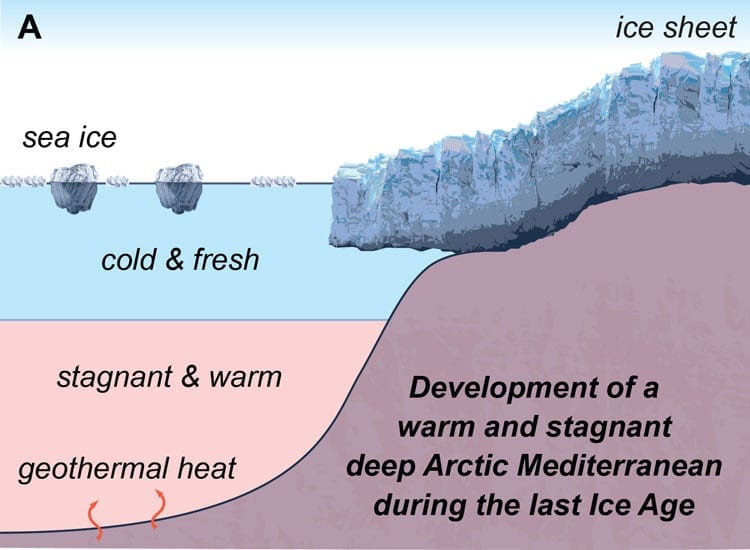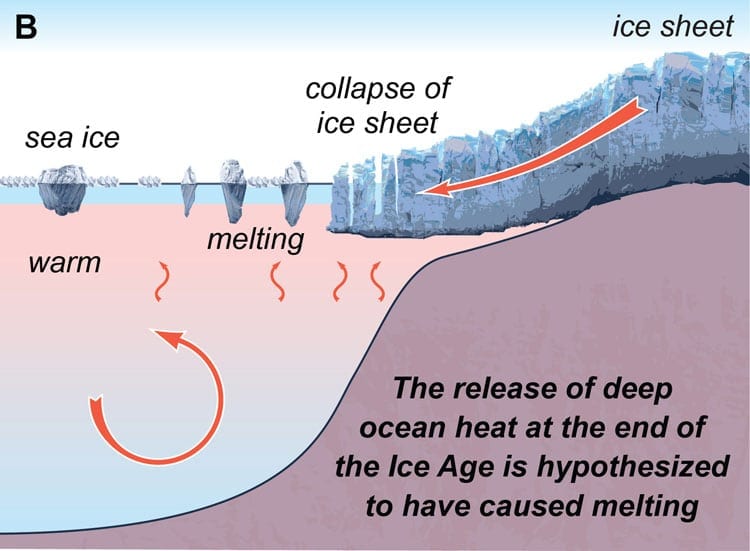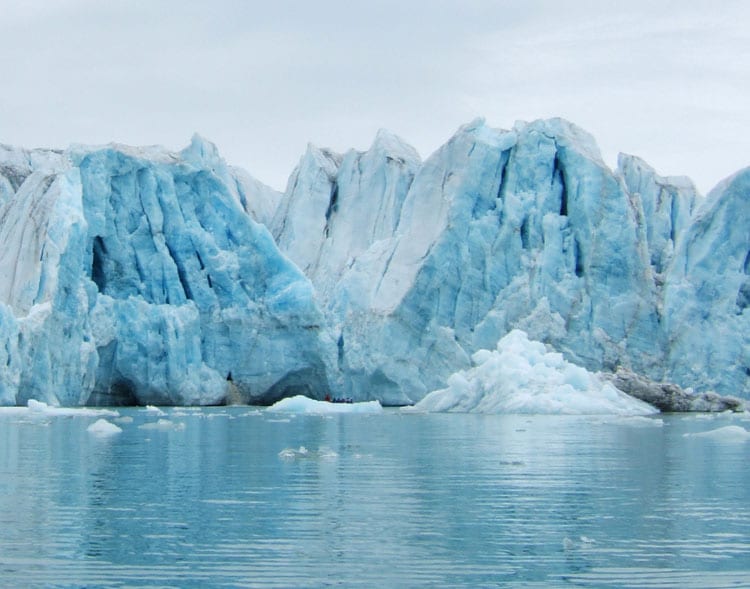Heat Release from Stagnant Deep Sea Helped End Last Ice Age
August 13, 2015
The build-up and subsequent release of warm, stagnant water from the deep Arctic Ocean and Nordic Seas played a role in ending the last Ice Age within the Arctic region, according to new research led by an international team of scientists.
The study, published today in Science, examines how the circulation of the combined Arctic Ocean and Nordic Seas – called the Arctic Mediterranean – changed since the end of the last Ice Age (~20,000-30,000 years ago). The results highlight the important impact that changes in ocean circulation can have on climate.
The ocean redistributes vast quantities of heat around the globe. Today, the polar ocean gives off heat and is cooled by the atmosphere during winter. This colder, denser water sinks and flushes through the deep Arctic Mediterranean. In contrast to the vigorous circulation of today, the researchers found that during the last Ice Age, a thick and extensive layer of sea ice and fresh water covered much of the Arctic, preventing the atmosphere from cooling and densifying the underlying ocean.
“The deep Arctic Mediterranean became like a giant stagnant pond, with deep waters not being replenished for up to 10,000 years,” said David Thornalley, a scientist with University College London (UCL), and the lead author on the paper. Thornalley conducted the work while at the Woods Hole Oceanographic Institution (WHOI), with fellow WHOI scientists Jake Gebbie and Weifu Guo.
“As well as being stagnant, these deep waters were also warm,” said Thornalley. “Sitting around at the bottom of the ocean, they slowly accumulated geothermal heat from the seafloor, until a critical point was reached when the ocean became unstable.”
The study suggests the heat previously stored in the deep Arctic Mediterranean was suddenly released to the upper ocean. According to evidence in the geologic record, the timing of this event coincides with a massive release of meltwater into the Nordic Seas. The researchers hypothesize that this input of melt water was caused by the release of deep ocean heat, which melted icebergs, sea-ice and surrounding marine-terminating ice sheets.
In this study, researchers from UCL, WHOI, and other partner institutions analysed the composition of calcite shells of small single-celled organisms (called foraminifera) that are found in ocean floor sediment. The shells of these organisms record the chemistry of the deep ocean at the time they were living, enabling the researchers to reconstruct past changes in ocean circulation.
By measuring the radiocarbon content of these shells, the research team was able to determine how rapidly deep water was being formed in the Arctic Mediterranean. A number of different techniques were then used to constrain past temperature changes, including measuring the ratio of magnesium and calcium, and the arrangement of isotopes of carbon and oxygen within the calcite shells of the foraminifera, both of which vary according to the temperature of the water in which the foraminifera grew.
A warmer, deep Arctic Mediterranean during glacial times has been suggested in previous studies, too. “It is good to see that new, independent proxy data would give strong support now to these former hypotheses,” noted the study’s co-author Henning Bauch, of GEOMAR/Germany.
Thornalley added: “Investigating how ocean circulation changed in the past, and what the associated climate effects were, can help us better predict the role of the ocean in future climate change.”
The research was funded by the WHOI Ocean and Climate Change Institute, the J. Lamar Worzel Assistant Scientist Fund at WHOI, the WHOI Penzance Endowed Fund in Support of Assistant Scientists, and a Marie Curie grant from the EU 7th Framework Programme, and the National Science Foundation.
The Woods Hole Oceanographic Institution is a private, non-profit organization on Cape Cod, Mass., dedicated to marine research, engineering, and higher education. Established in 1930 on a recommendation from the National Academy of Sciences, its primary mission is to understand the ocean and its interaction with the Earth as a whole, and to communicate a basic understanding of the ocean’s role in the changing global environment. For more information, please visit www.whoi.edu.



